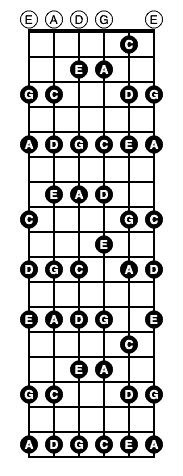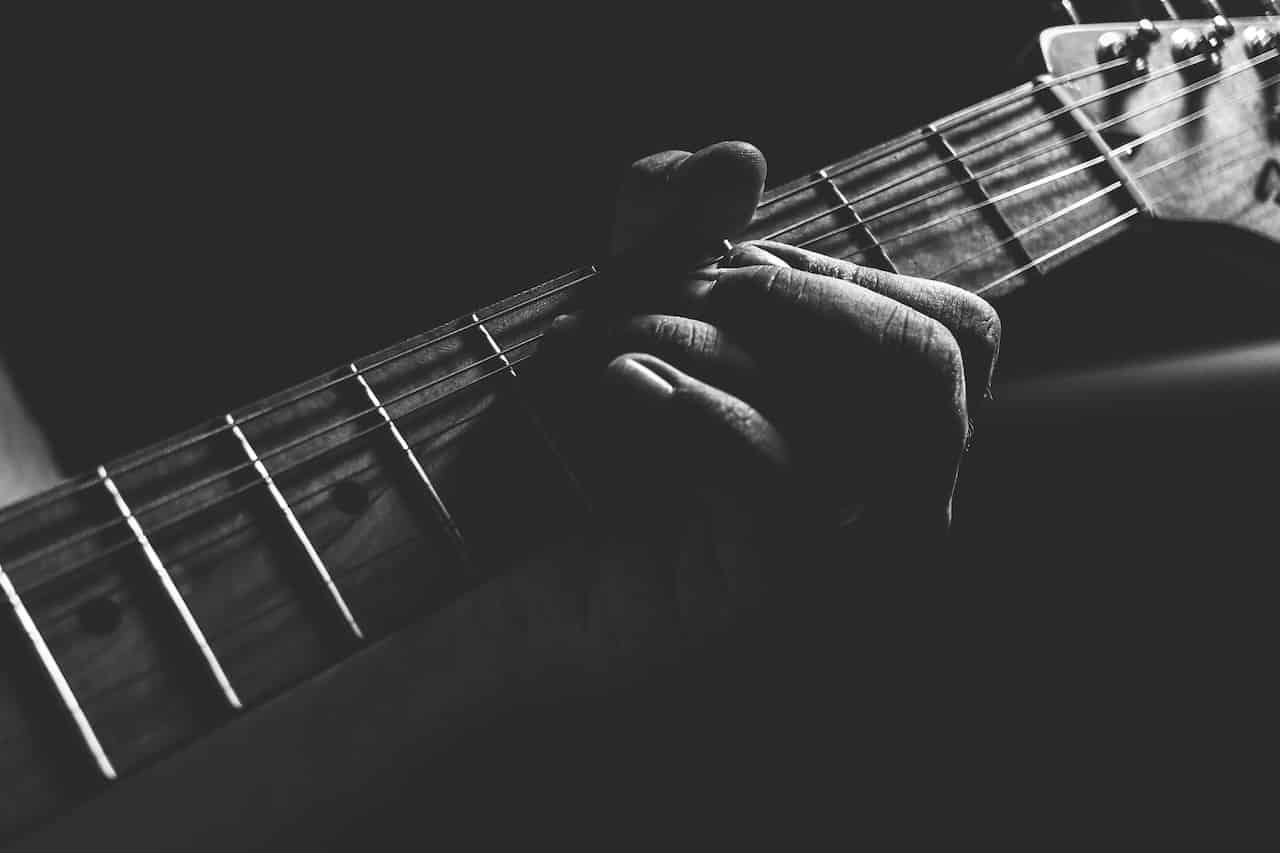Whenever you think about learning guitar, you should be thinking about this word: CAGED. This system is a description of the arrangement of keys and notes on your fretboard. It’s the best way to learn guitar scales and chords, and it includes naturally the minor pentatonic scale, the most used for soloing! In this article, we will make a quick yet complete explanation of how the CAGED system works and how we can use it to learn the guitar quickly. Let’s start!
CAGED to learn Chords
A quick and easy way to learn chords is by realizing there are basic “shapes” for chords. The basic shapes are those of the 5 major chords that can be done with open strings – C, A, G, E, and D!
To be able to understand the notation, frets will be indicated by numbers. O is an open string, and X means not playing that string. For the fingers, we use numbers. The index finger is 1, the middle finger is 2, the ring finger is 3, and the pinky is 4.
Now that we have these important shapes down, let’s take the chord of C as a reference. C major, as a chord, is comprised of three notes: C, E, and G. These notes repeat themselves all over the chord in its basic form, as follows:

We can also play the same chord in different places on the fretboard, using a different bass note but having the same root. Chords like these are called chord inversions. If we are looking for different ways to play the chord C down the fretboard, we will find the following:
If we put a capo or make a barre in the 3rd fret, we can play C by using the “A” shape.

If we put a capo or make a barre in the 5th fret, we can play C by using the “G” shape.

If we put a capo or make a barre in the 8th fret, we can play C by using the “E” shape.

If we put a capo or make a barre in the 10th fret, we can play C by using the “D” shape.

Furthermore, if we want to play C with its original shape in a higher octave, we only need to capo or barre the 12th fret!

This also means we can find any major or minor chord (and their alterations) easily by starting with one of these shapes, then adding in frets the distance between our basic shape and the desired note. More on this particular subject in the article on how to learn scales easily. For example, if we wanted to find F#, we do the following:
From E, there are 2 semitones to reach F#, so we put a capo or barre in the 2nd fret and play our E shape.

From D, there are 4 semitones to reach F#, so we put a capo or barre in the 4th fret and play our D shape.

Here’s a little exercise: can you figure out where to capo or barre to play F# using our C, A, and G shapes? Let’s get to it!
CAGED to learn Scales
C, A, G, E, and D are the notes for the minor pentatonic scale of A. This is one of the most common scales (if not the main) for soloing and for improvisation in many genres.

If we look closely, you will see that all the notes that make CAGED are neatly grouped along certain frets. They’re also within two or three frets apart from each other, which makes improvising with these notes very comfortable.
Let’s make this even simpler. Let’s make a simple sequence exercise in the key of Am with the notes in CAGED. Namely, we will be playing D E G A C D.

Now, this sequence (D E G A C D) can be repeated from the A string, if we take our fingers 2 frets back to the headstock, from the 7th to the 5th fret.

Moreover, the last 4 notes of this sequence (G A C D) can be played from the E string if we go back another 2 frets, from the 5th fret to the 3rd.

If we put the three exercises together, it would be something like this:

Now let’s try to integrate these notes into something more melodic. The sequence is A C G A E G D E C D.

Same notes, different sequence. This time the sequence is E G A C A G A.

Practice these positions frequently. We can get very creative with them, sequence these notes however we wish, and make our first improvisations. In fact, if you check Stranglehold, by Ted Nugent, you will notice that this excuse of a song for an amazing 8-minute solo – I mean – this song with one of the greatest improvised solos of all time has a lot of influence of the exercises described above, with some minor variations. Moreover, we can work it on any key we want by moving it up or down the fretboard!
Click here to see the tab of Ted Nugent’s Stranglehold.
Now that we talked about the best way to learn guitar scales and chords, it’s time to practice! Do you want to learn more about the minor pentatonic scale? You can do it by reading our article on the first scale you need to learn to play the guitar.








